
It was Easter Sunday, and it had been a beautiful weekend so far and promised to be warm and sunny today. We chose Leasowe because it often gets good spring migrant birds dropping in, like Wheatear, and there has been a Ring Ouzel in the horse fields off Park Lane all week. That would be a good tick! Where the old Cadbury factory used to be, north of Moreton Station, there is now a large estate of new houses. There was a Pied Wagtail on the lawns and Hairy Bittercress growing all along the fence at the edge of the pavement. We turned off Pasture Road into the North Wirral Coastal Park, Kerr’s field, passing an apple tree which was just coming into flower.
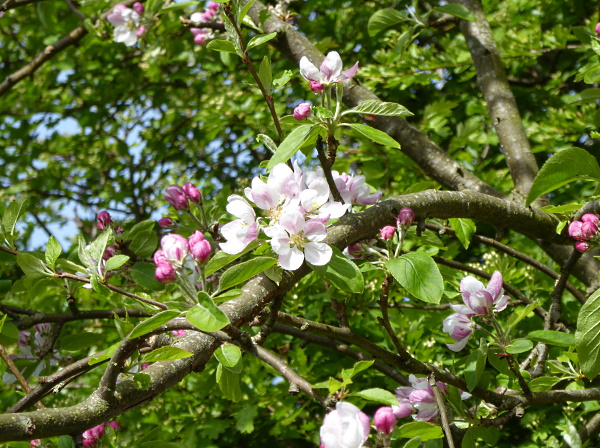
Mallards were pairing up on the river Birket, a Chiffchaff was singing and a Heron flew over. A Mistle Thrush was poking about, and in the next field there were Carrion Crows, a Lesser Black-backed Gull in a puddle and two resting Canada Geese. Two more Canadas flew in, which prompted the first two to engage in some hostile running and honking, until the interlopers were seen off. The warm weather had brought out the butterflies, including some Orange Tips, and this Small Tortoiseshell sipping from a Dandelion.
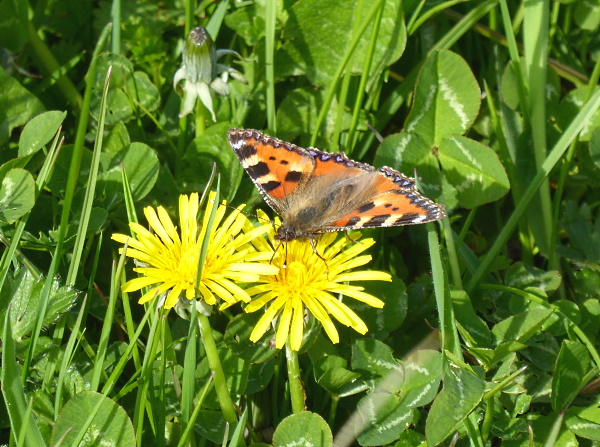
Wildflowers lined the verges: Garlic Mustard, Yellow Archangel, Green Alkanet, a big patch of White Dead-nettle, Spanish Bluebells (mostly pink and white, not blue), masses of Dandelions and Daisies, Red Dead-nettle, Alexanders, Lesser Celandine, and we spotted the first Hawthorn blossom just opening. In the hedges the Alder leaves were coming out, but they were covered in Alder Beetles. The adults over-winter in the leaf-litter apparently, and the warm weather has woken them up, ready to get mating and laying.
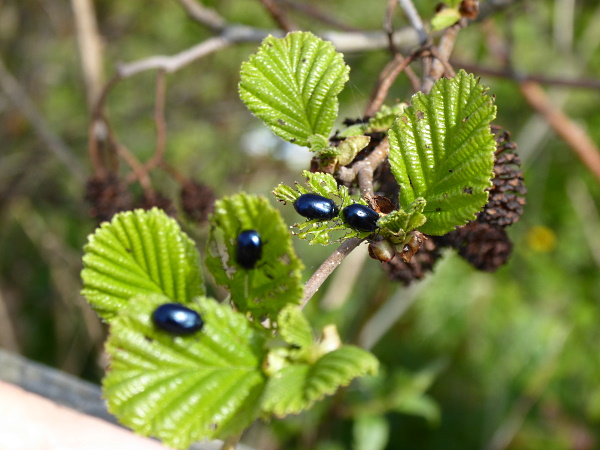
We took the path parallel to the coast, leading to the horse fields off Park Lane. There was a Curlew in the field on our left, and the last of the Blackthorn was shedding its white petals onto the path.
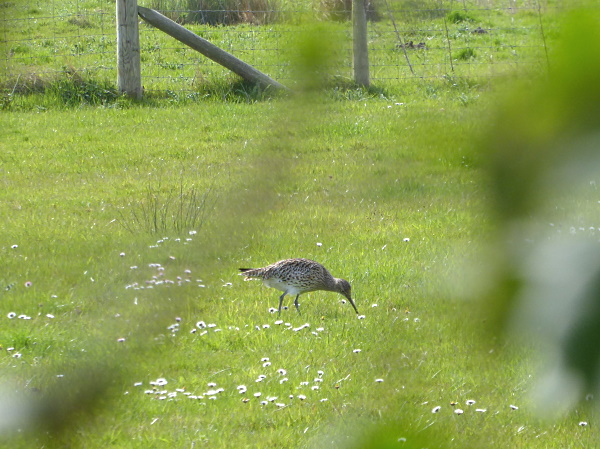
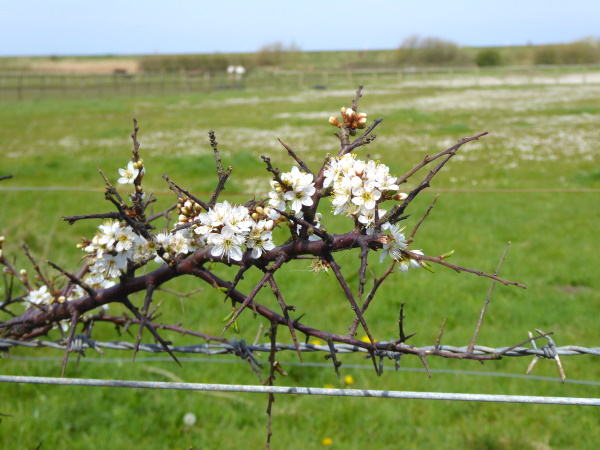
We came upon two men with tripods and telescopic cameras. They confirmed that this was the field that the Ring Ouzel had been in all last week, but on Saturday evening it was chased off by a Sparrowhawk and hadn’t been seen since. Just our luck. But they pointed out two White Wagtails, which was a pretty good consolation tick.
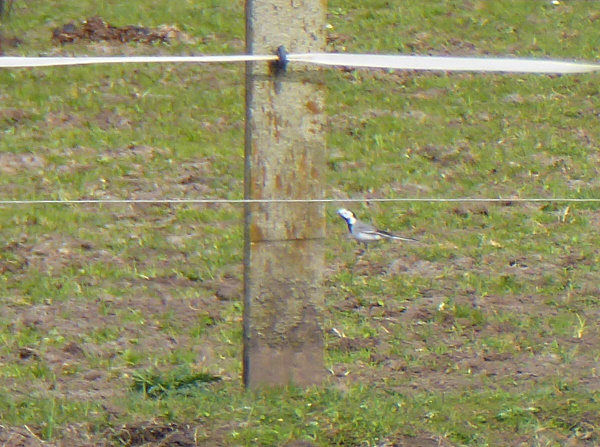
We turned north towards the coast along the shady farm lane overlooked by a mountain of horse manure. There on the steep opposite bank was a large patch of an unusual plant. Each stem had a cluster of little white flowers surrounded by a single green leafy cup. This arrangement is called “perfoliate”. I identified it at home as Winter Purslane or Spring Beauty, Claytonia perfoliata. In the USA it’s called Miner’s Lettuce. It’s edible, rich in Vitamin C, and its seeds are sold as an ingredient of winter salads. I had already foraged some Garlic Mustard and the young stems of Alexanders, and I’m sorry I didn’t know enough to collect some of that, too.
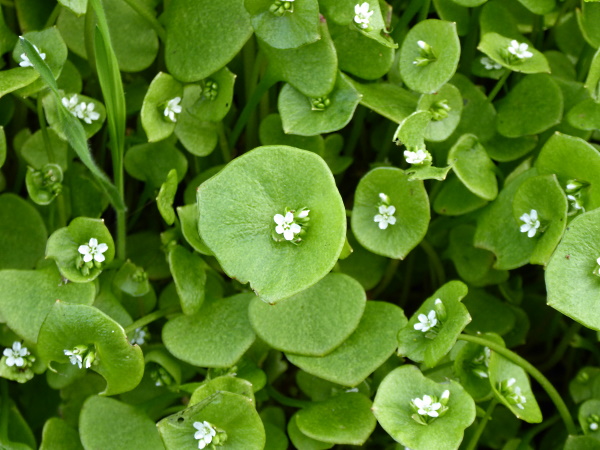
We lunched up on the sea wall bank with a view of Liverpool Bay, then returned to the Lighthouse by a different path. More Orange Tip butterflies, a Peacock or two and a smart-looking Speckled Wood.
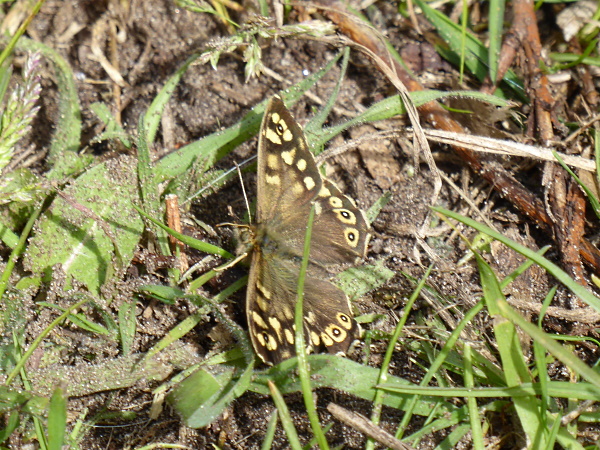
There was a patch of Greater Stitchwort under a hedge.
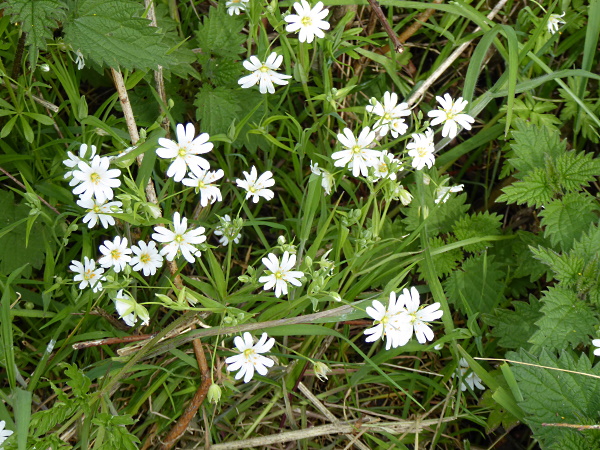
We were looking for Swallows (none), Wheatears (none), Stonechat (none either) although we did see a Skylark singing overhead. By the side of the road to the car park was a single clump of Lady’s Smock. It’s the food plant of the Orange Tip butterfly, but that one clump is not enough, surely.
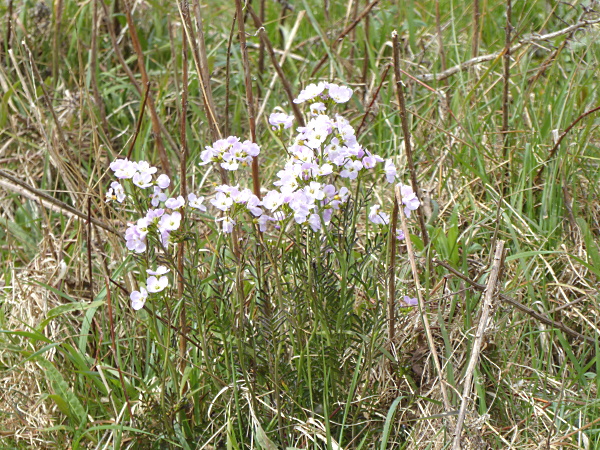
A Blackbird was singing its heart out at the top of a shrub on Pasture Road.
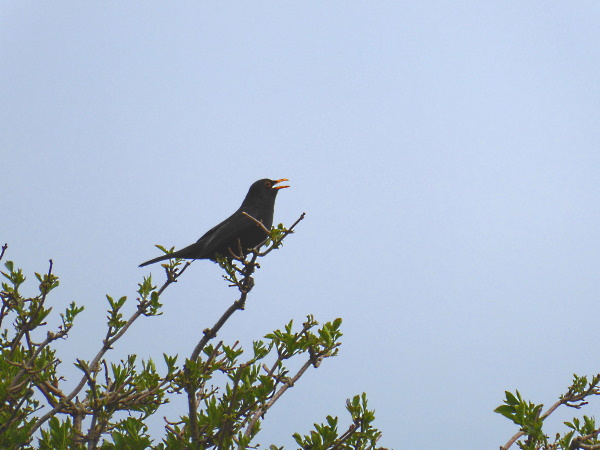
Along the path that lines the Birket on the eastern side of the road, the just-leafing deciduous trees made a pleasing grey-green foil to the dark evergreen Scots Pines.
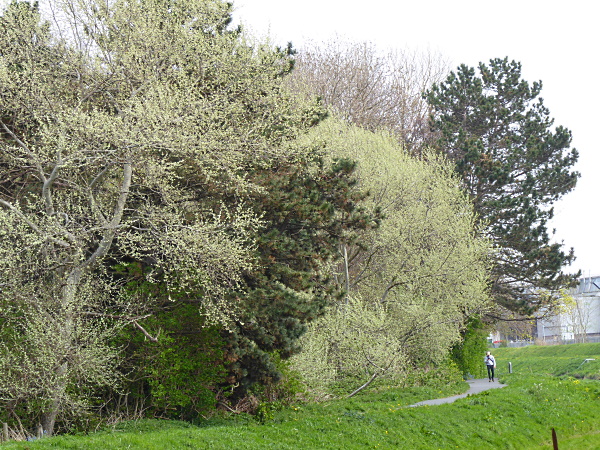
That was far subtler than the bright pink new leaves of the ubiquitous Sycamore, although those are lovely in their own way, too.
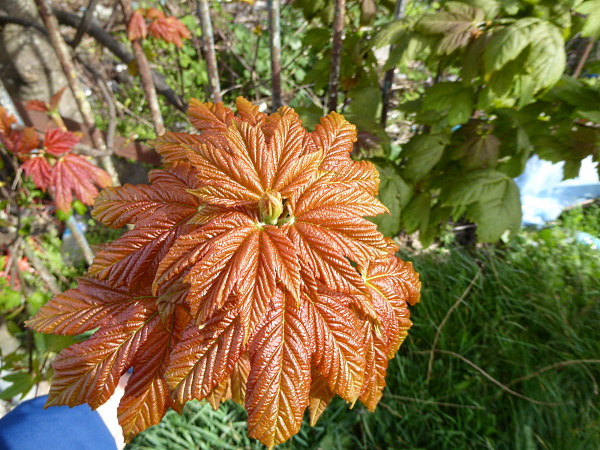
Public transport details: Train at 10.05 from Central Station towards West Kirby, arriving Moreton 10.25. Returned from Moreton at 2.41, arriving Liverpool Central 3.10.
